What Are Some Drought-Tolerant Trees You Can Plant in Your Calgary Yard?
Reading time: 6 minutesWhile Calgary is no stranger to dry, arid conditions throughout the year, this season has been particularly difficult, with mandatory water restrictions that limit usage. Keeping our trees thriving and our yards green and lush can be a bit of a challenge.
But don't worry! If you're looking to add some trees to your yard that can handle the heat and dry spells, you're in the right place.
Let's dive into some fantastic drought-tolerant tree options that will not only survive but thrive in our unique Calgary climate, all brought to you by your friendly neighbourhood tree company.

Best Drought-Tolerant Tree Varieties to Consider for Your Calgary Yard
1. Bur Oak
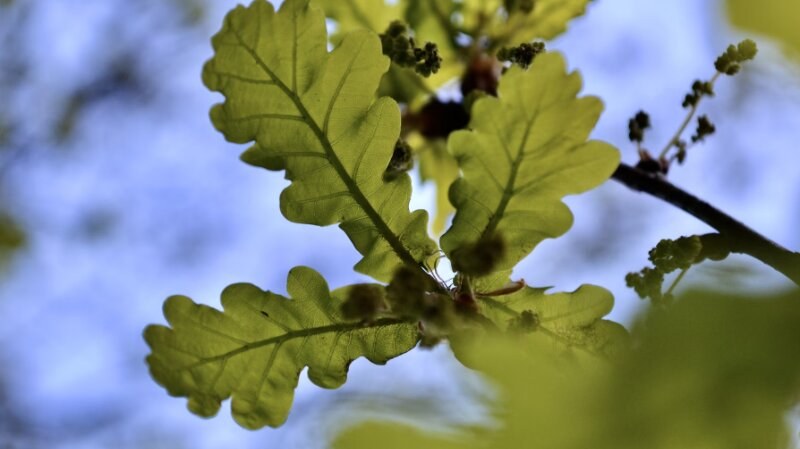
Other Names: Prairie oak, blue oak, mossycup oak, scrub oak
Type of Tree: Deciduous
Appearance: These trees have thick, tough bark on their trunks that doesn't flake and large branches throughout the canopy. Acorn caps are large with hair-like bud scales.
Soil Preference: Thrives in loamy, sandy, and clay soils with adequate drainage but will adapt to harsher conditions.
Top Benefits: It has excellent winter hardiness, tolerates full sun and partial shade, and produces a beautiful shade canopy.
What to Keep In Mind: Slow-growing and difficult to transplant due to its deep root system.
Fun Fact: The Bur Oak can live for over 200 years, making it a true legacy tree! They also only produce acorns every few years, but these tasty, nutty treats are a favourite of nearby wildlife.
2. White Spruce

Other Names: Canada spruce, single spruce, Western white spruce, cat spruce, skunk spruce
Type of Tree: Coniferous
Appearance: White spruce trees have a traditional "Christmas tree" look, with a deep green colour that shows year-round. These trees are straight, tall, and relatively narrow compared to other kinds of spruce trees.
Soil Preference: Moist, loamy, and slightly acidic soil if possible
Top Benefits: Adaptable to drought and other harsh soil conditions, resistant to the extreme cold temperatures common for Calgary winters.
What to Keep In Mind: Like all spruce trees, white spruce is susceptible to pests like bark beetles, spider mites, gypsy moths, and white pine weevils.
Fun Fact: White pine seeds are a great food source for birds like evening grosbeaks and crossbills. Black bears and porcupines can eat this tree's bark, while deer and rabbits feast on the foliage.
3. Northwest Poplar

Other Names: Populus x jackii 'Northwest'
Type of Tree: Deciduous
Appearance: Northwest poplars are tall trees with oval-shaped foliage with heart-shaped leaves that become a beautiful bright yellow in the fall. Their trunks are relatively thin compared to the wide drip line and make a stunning shade tree.
Soil Preference: Tolerates both wet and dry conditions and typically isn’t bothered by soil acidity.
Top Benefits: Can withstand road salt used for deicing sidewalks and driveways.
What to Keep In Mind: These trees can be highly susceptible to fungal diseases, so you’ll need to keep an eye out for them.
Fun Fact: Poplar trees are important to Greek mythology and were considered a mark of perseverance and protection.
4. Manitoba Maple
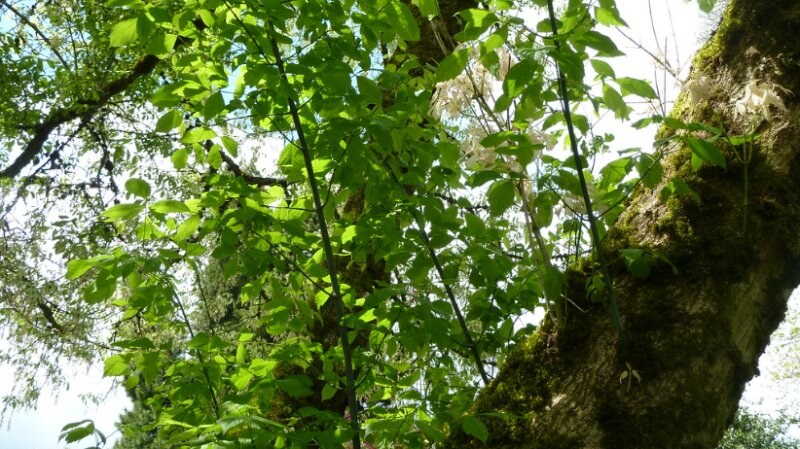
Other Names: Box-elder maple, elf maple, ash-leaved maple
Type of Tree: Deciduous
Appearance: Manitoba maples are large, fluffy trees with an opposite branching pattern that creates the look of multiple trees growing close together.
Soil Preference: Can adapt to a wide variety of soil conditions. Although this tree is typically found near riverbeds, it also does well in drier soil.
Top Benefits: Grows fast and is highly resistant to challenging outdoor conditions.
What to Keep In Mind: Trimming and pruning are crucial to maintaining good structure since these trees can sometimes grow unpredictably.
Fun Fact: Manitoba maple syrup is made using the sap harvested from these trees.
5. Amur Maple (Acer ginnala)
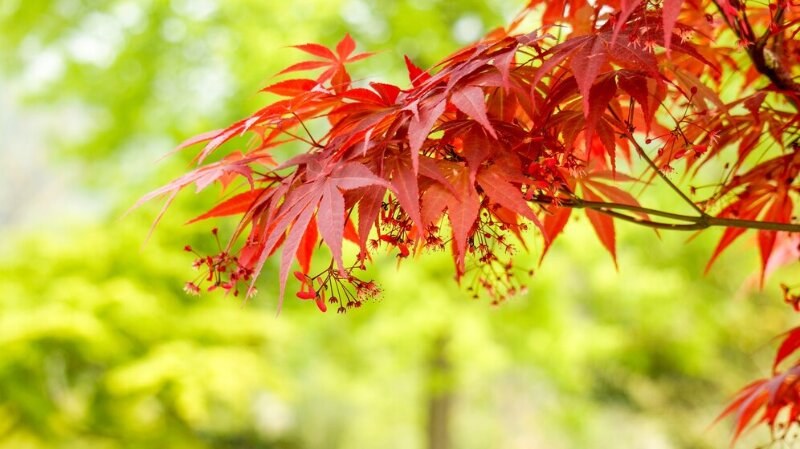
Other Names: Siberian Maple
Type of Tree: Deciduous
Appearance: They’re small trees or large shrubs with vibrant red to orange fall foliage and fragrant spring flowers.
Soil Preference: Prefers well-drained, slightly acidic to neutral soil but adaptable to a variety of soil conditions.
Top Benefits: Adds stunning fall colour, can be used as a privacy screen or hedge, and is relatively low maintenance.
What to Keep in Mind: It can spread via seeds, so regular maintenance may be required to control unwanted growth.
Fun Fact: The Amur Maple is often used for bonsai due to its beautiful foliage and compact size.
6. Russian Olive (Elaeagnus angustifolia)
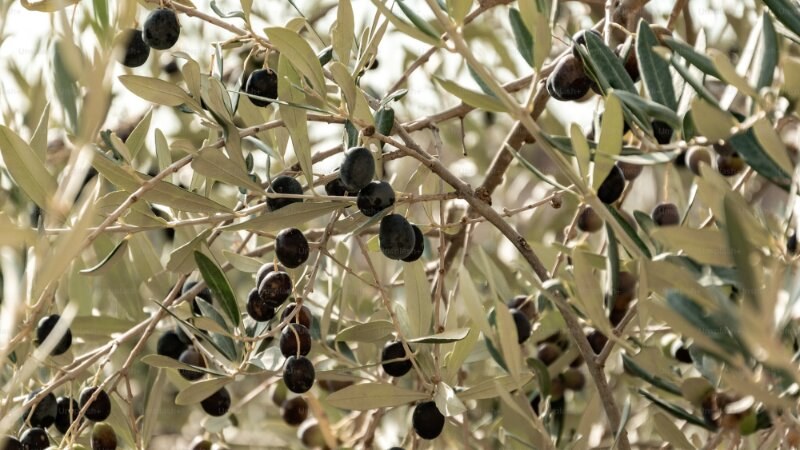
Other Names: Oleaster
Type of Tree: Deciduous
Appearance: Russian Olive trees are medium-sized trees with silver-gray leaves and yellow, fragrant flowers that produce small, olive-like fruits.
Soil Preference: Tolerates poor, dry soils and can thrive in saline conditions.
Top Benefits: Extremely drought-tolerant, provides habitat for wildlife, and has attractive, fragrant flowers.
What to Keep in Mind: Can be invasive in some areas, so it's important to manage its spread.
Fun Fact: The Russian Olive fixes nitrogen in the soil, improving soil quality for nearby plants.
7. Colorado Blue Spruce (Picea pungens)
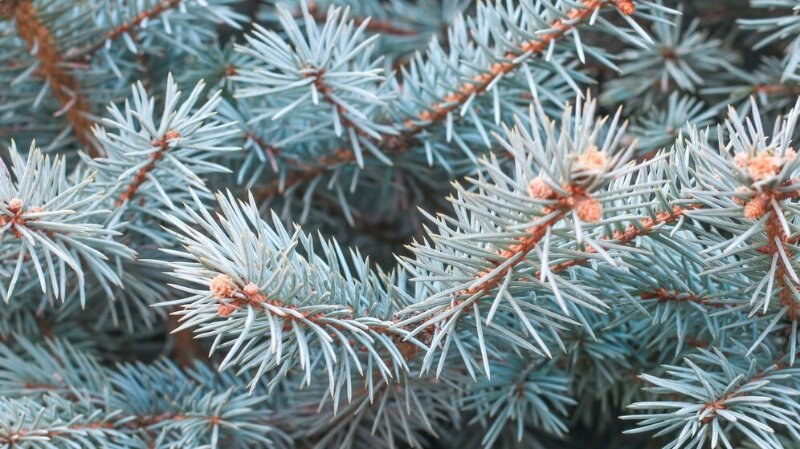
Other Names: Blue Spruce, Colorado Spruce
Type of Tree: Evergreen
Appearance: They’re pyramidal in shape with stiff, blue-green needles and cones that hang down.
Soil Preference: Prefers moist, well-drained soils but is drought-tolerant once established.
Top Benefits: Provides year-round colour, is excellent for windbreaks and privacy screens, and is low maintenance.
What to Keep in Mind: Can be susceptible to certain pests and diseases; regular inspection and care are definitely recommended.
Fun Fact: The Colorado Blue Spruce is often used as a Christmas tree.
When to Plant
Planting new trees is usually best done during the fall when the tree will have a chance to root well before going dormant for the winter. However, it’s also key to pay attention to your local water regulations and plant your trees when there are fewer restrictions.
This is because new trees need a lot of water in the early stages in order to become established. For example, if you plant during Stage 3 and Alberta implements Stage 4 restrictions soon after, you won’t be able to water your new tree at all until regulations are lowered again.
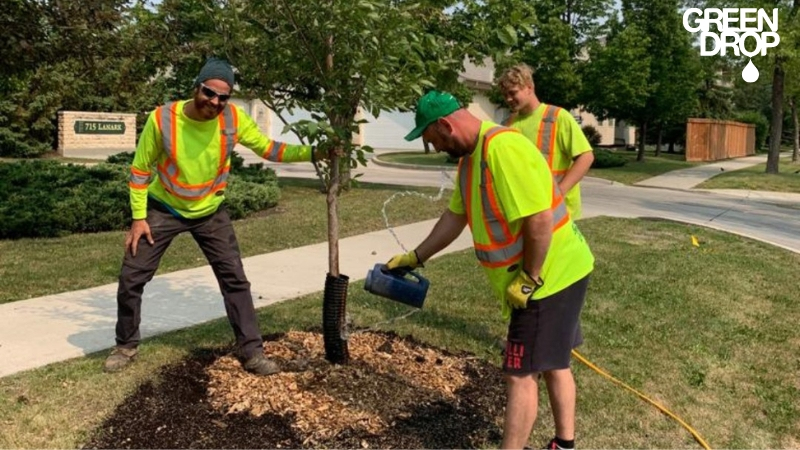
The Importance of Planting Native and Drought-Tolerant Trees
We recommend that you do your research before planting trees on your property. Choosing the wrong kind of tree for your soil conditions or desired aesthetics can leave you with a long-lasting problem that costs even more money to fix. But don’t worry, we can help! We can do a complete assessment of your property to determine which kind of trees you should plant and where to achieve your specific landscaping goals.
What Makes a Tree Resistant to Drought?
Trees resistant to drought have been specifically bred to tolerate hot, dry weather better than others. These trees usually have thick, waxy leaves that prevent moisture evaporation and deep root systems that can dig down further for water reserves.
How to Protect New Trees From Drought
You can help protect your trees from drought by:
- Avoiding planting during the spring and summer
- Mulching around them with high-quality, organic mulch
- Limiting pruning to branches that must be removed for safety or the tree’s health
- Maintaining good soil texture
- Looking for leaf scorching or wilting that would indicate too much time has passed in between waterings

Need Expert Tree Planting Advice? Get In Touch With Our ISA-Certified Arborists
If you’re planning on adding new trees to your lawn family, you’ll want to make sure it gets done right from the start.
At Green Drop, our tree planting services are performed according to strict ANSI A-300 Planting standards to ensure that each tree is as healthy as possible and in the best position to grow. Book your tree services now, or contact us to get an estimate.
We make it easier than ever to monitor your tree health and prevent insects and diseases.

